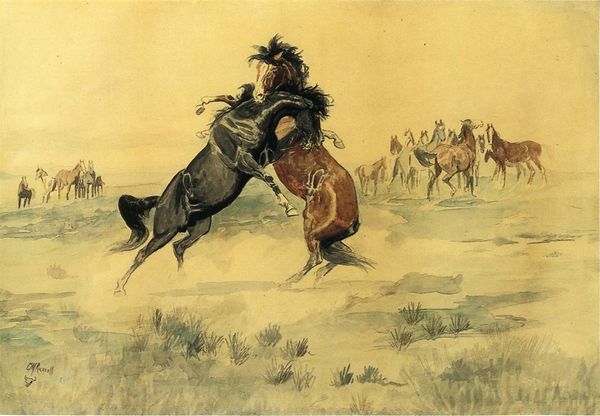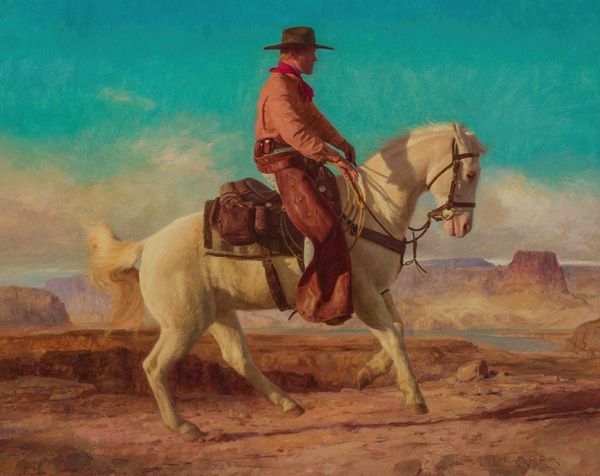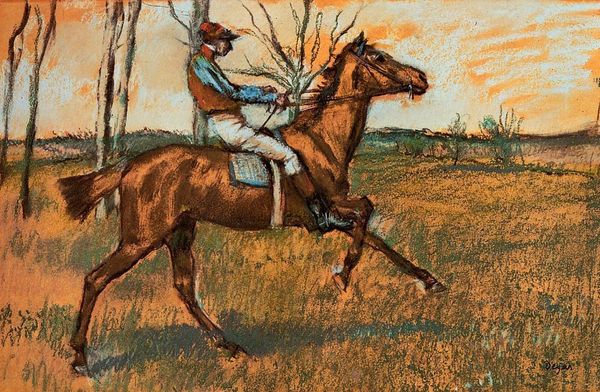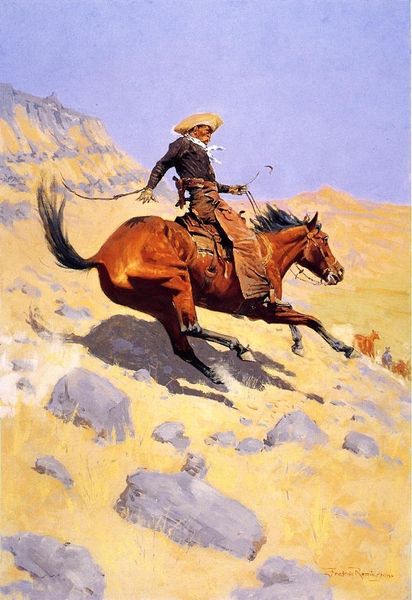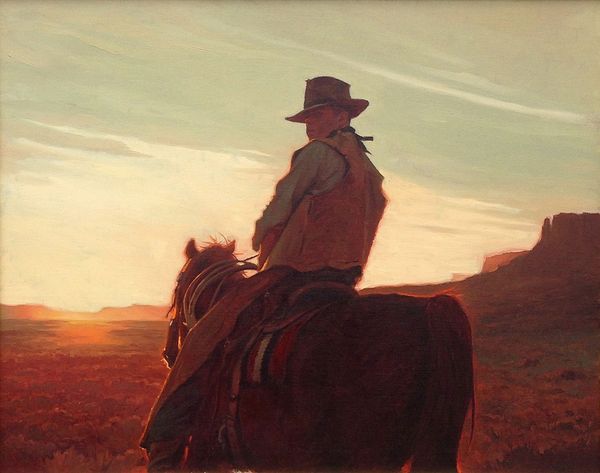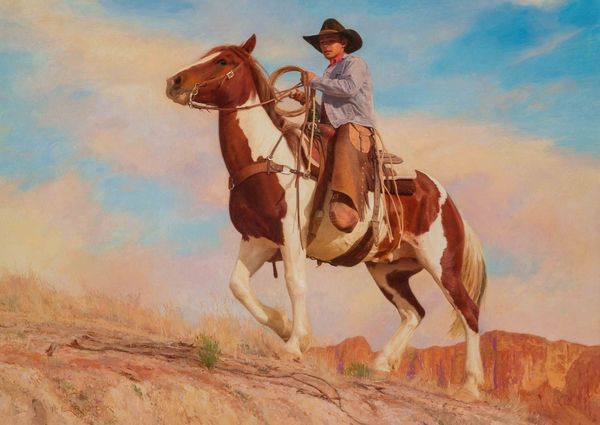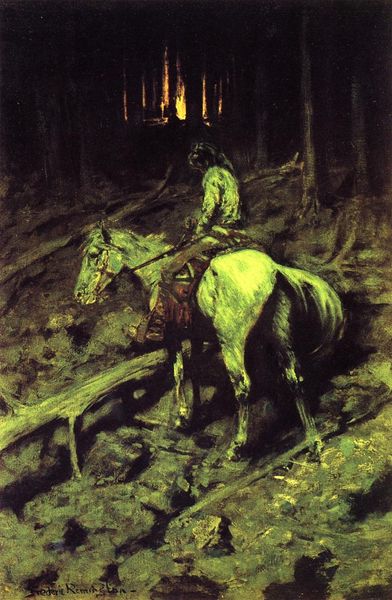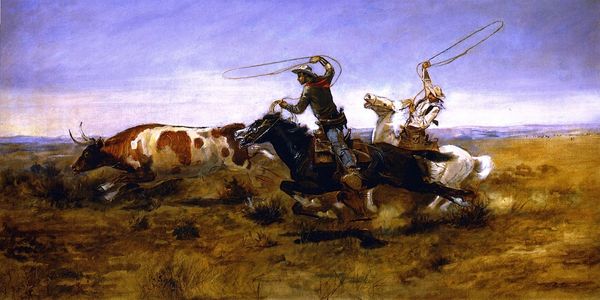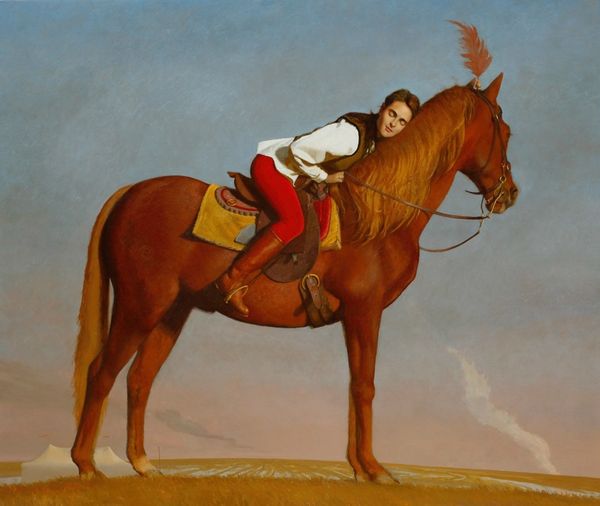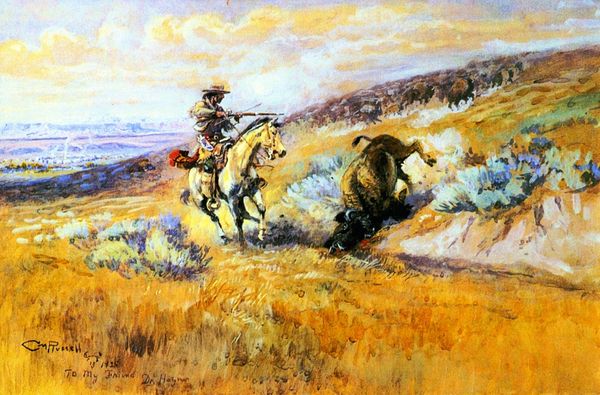
Copyright: Public domain
Editor: Frederic Remington’s "Against the Sunset," painted in 1906, strikes me as a very romantic portrayal of the West. The golden hues and silhouetted figure create a sense of both nostalgia and… loss, perhaps? What do you see in this piece? Curator: The painting evokes a complex and often problematic narrative. Consider the historical context: Remington painted this during a period of intense westward expansion and the forced displacement of indigenous populations. Doesn’t the romanticism of the cowboy, the lone figure against the sunset, risk glorifying a history of violence and dispossession? How do we reconcile the aesthetic appeal with the political reality? Editor: That's a powerful point. I hadn’t considered the way the painting might whitewash the realities of the era. Curator: Precisely. Think about how this image perpetuates certain ideals. The cowboy becomes a symbol of rugged individualism, masking the collective violence enacted upon the land and its people. What other artistic choices reinforce this, like the obscuring shadows that give a strong form without detailed individualizing? Editor: The limited color palette also seems to contribute. The dominance of gold flattens the visual field and contributes to the impression that it happened long ago. Curator: Right! This also gives space to analyze this artwork by reading contemporary scholars in Indigenous studies. In doing so, can we rethink and revise the iconography of the "Wild West?" Editor: Absolutely. It really shifts my perspective on the painting and its legacy. I see the aesthetic appeal still but also the inherent politics of representing that time. Curator: And that's crucial, that recognition. By acknowledging these complexities, we can engage with art history in a much more meaningful and ethical way.
Comments
No comments
Be the first to comment and join the conversation on the ultimate creative platform.
